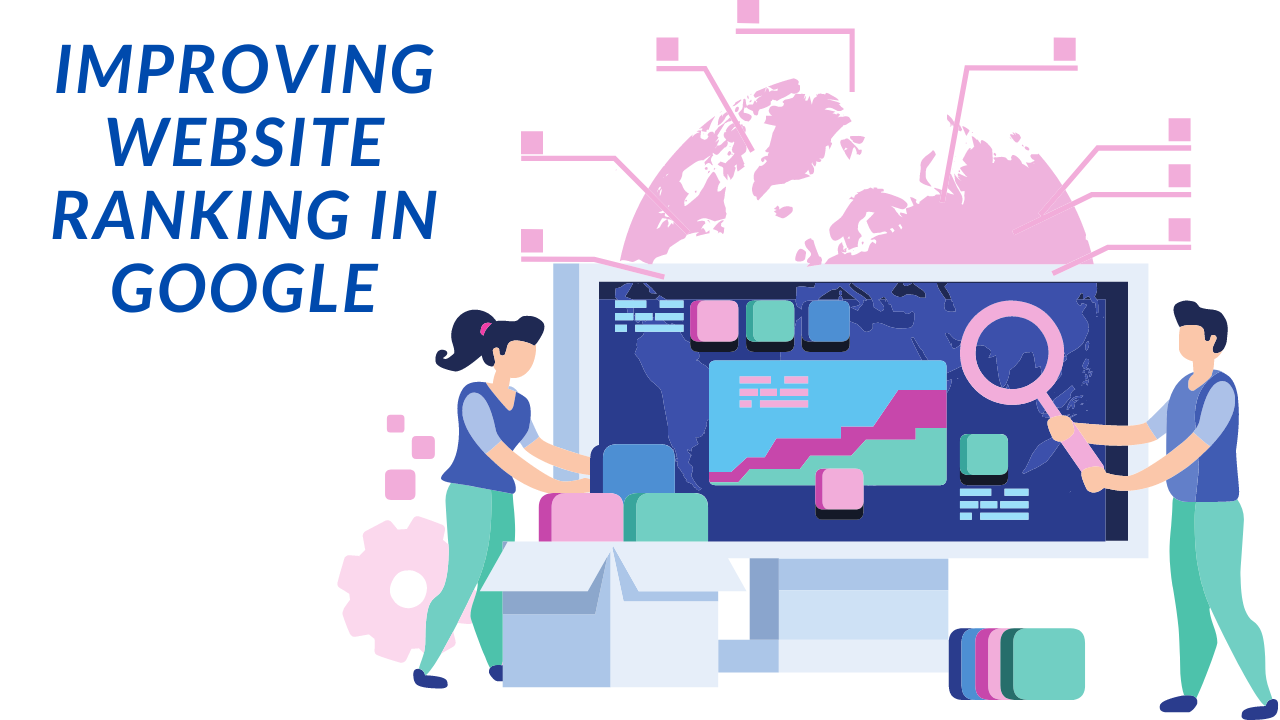How to Improve Website Ranking in Google: A Comprehensive Guide to SEO
The Ultimate Guide to Improving Website Ranking in Google: SEO Best Practices

Search engine optimization (SEO) is the practice of optimizing a website to improve its ranking in search engine results pages (SERPs). In today's digital age, having a website that ranks well in Google and other search engines is crucial for businesses and individuals alike. However, SEO can be a complex and constantly evolving field, and it can be difficult to know where to start.
In this guide, we'll take a comprehensive look at how to improve website ranking in Google through SEO best practices.
- Keyword Research Keyword research is the foundation of SEO. It involves identifying the words and phrases that people use to search for products, services, or information online. By targeting the right keywords, you can optimize your website content to rank higher in Google's search results.
To conduct keyword research, start by brainstorming a list of potential keywords that are relevant to your business or website. Then, use a keyword research tool such as Google Keyword Planner or SEMrush to get data on the search volume and competition for those keywords. Choose keywords that have high search volume and low competition, and incorporate them into your website content.
- On-Page Optimization On-page optimization refers to the optimization of individual web pages to improve their ranking in search results. This includes optimizing meta tags, headings, and content to target specific keywords.
To optimize your web pages, start by including your target keywords in the page title, meta description, and URL. Use header tags (H1, H2, H3) to organize your content and make it easier for both users and search engines to understand. Make sure your content is high-quality and relevant to your target keywords, and include internal links to other pages on your website.
- Link Building Link building is the process of acquiring links from other websites to your own. In Google's eyes, links are like votes of confidence for your website - the more high-quality links you have, the more authoritative your website appears.
To build links, start by creating high-quality content that others will want to link to. Reach out to other websites in your industry or niche and ask if they would be interested in linking to your content. You can also submit your website to relevant directories or participate in guest blogging opportunities to get links back to your site.
- Backlinks Backlinks are incoming links to your website from other sites. Backlinks are an important factor in Google's ranking algorithm, and having high-quality backlinks can help improve your website's ranking.
To build backlinks, focus on creating high-quality content that others will want to link to. Reach out to other websites in your industry or niche and ask if they would be interested in linking to your content. You can also participate in link exchange programs or submit your website to relevant directories.
- Meta Tags Meta tags are HTML elements that provide information about a web page to search engines. The two most important meta tags for SEO are the title tag and meta description tag.
To optimize your meta tags, include your target keywords in both the title and meta description tags. Keep the title tag under 60 characters and the meta description under 155 characters to ensure they display properly in Google's search results.
- Content Creation Content creation is an important part of SEO. By creating high-quality, relevant content that targets specific keywords, you can improve your website's ranking in Google's search results.
To create content that targets your keywords, start by conducting keyword research to identify the phrases and topics that people are searching for. Then, create content that is relevant and informative, and use internal linking to help Google understand the structure of your website.
7. Site Speed Optimization Site speed is another important factor in SEO. Google has stated that site speed is a ranking factor, and a faster website can improve user experience and reduce bounce rates. To optimize your site speed, start by using a website speed test tool such as GTmetrix or Google PageSpeed Insights to identify any issues.
Common issues include large images, unoptimized code, and too many plugins or scripts. Once you've identified the issues, take steps to optimize your website, such as compressing images, minifying code, and reducing the number of plugins or scripts.
8. Mobile Responsiveness With more than half of all web traffic coming from mobile devices, having a mobile-responsive website is essential for SEO. Google has stated that mobile-friendliness is a ranking factor, and a mobile-responsive website can improve user experience and reduce bounce rates.
To optimize your website for mobile devices, start by using a mobile-friendly test tool such as Google's Mobile-Friendly Test. If your website isn't mobile-friendly, consider using a responsive design that adjusts to the size of the user's device. You can also optimize your content for mobile devices by using shorter paragraphs, larger fonts, and simpler navigation.
9. User Experience (UX) Design User experience (UX) design refers to the overall design of a website, including its layout, navigation, and functionality. A good UX design can improve user experience and reduce bounce rates, which can in turn improve your website's ranking in Google's search results.
To optimize your website's UX design, start by focusing on the user. Make sure your website is easy to navigate, with clear calls-to-action and a logical layout. Use high-quality images and videos to engage users, and make sure your website loads quickly on both desktop and mobile devices.
10. Analytics and Tracking Finally, it's important to track your website's performance using analytics tools such as Google Analytics. By tracking metrics such as traffic, bounce rate, and conversion rate, you can identify areas where your website can be improved and make data-driven decisions about your SEO strategy.
To get started with analytics and tracking, set up a Google Analytics account and add the tracking code to your website. Use the data to identify areas where your website can be improved, such as pages with high bounce rates or low conversion rates. Then, take steps to optimize those pages and measure the impact on your website's ranking in Google's search results.
Overall, improving your website's ranking in Google requires a comprehensive SEO strategy that includes keyword research, on-page optimization, link building, backlinks, meta tags, content creation, site speed optimization, mobile responsiveness, UX design, and analytics tracking. By following these best practices, you can improve your website's visibility in Google's search results and drive more organic traffic to your website.
SEARCH
-
Popular SEO Tools
- Plagiarism Checker
- Article Spinner / Rewriter
- Keyword Position Checker
- Grammar Checker
- Domain Authority Checker
- Pagespeed Insights Checker
- Image Compression Tool
- Reverse Image Search
- Page Authority checker
- Text To Speech
- Backlink Checker
- Alexa Rank Checker
- Backlink Maker
- Domain Age Checker
- Website Ping Tool
- Website Seo Score Checker
- Keyword Density Checker
- Website Page Size Checker
- Word Count Checker
- Mozrank Checker



